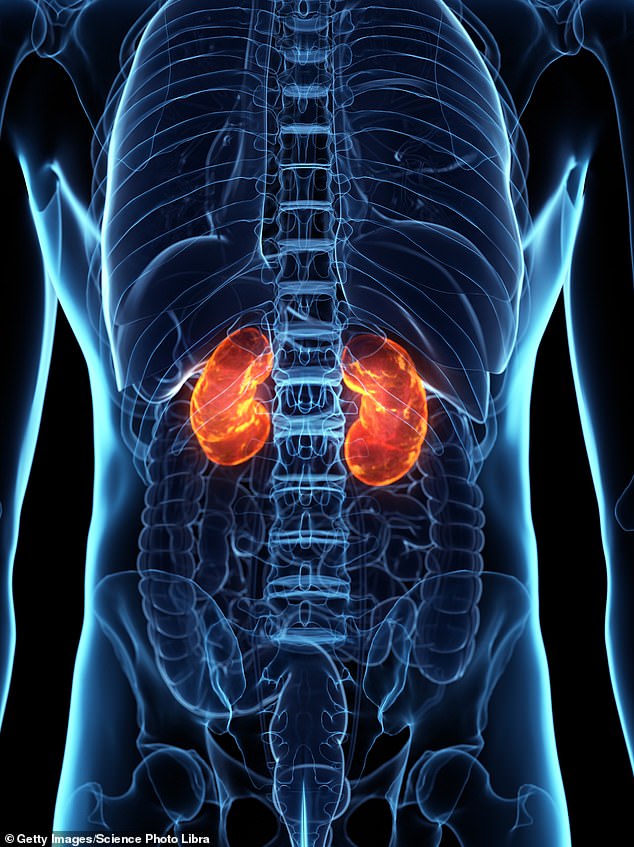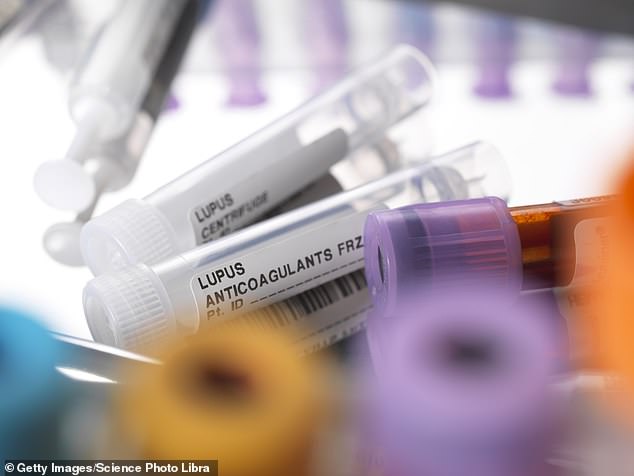Sitting in the ER at just 19 years old and in her second year of college with swollen, agonizing ankles (the latest in a long line of unexplained health problems), Rachel Hall realized how unwell she was.
The doctor said that her latest problem was nothing serious, while her partner, now husband, León, told her the long list of symptoms he had been struggling with for months.
“Leon described how I had lost weight and my hair was falling out,” says Rachel, from Lewisham, south-east London.
‘I had constant urine infections, thrush, rashes all over my body, abscesses under my arms and my mouth was full of ulcers.
‘The joints in my legs, feet, hands and arms hurt and swollen.
Rachel, 35, is proof that treatments for lupus have improved, although there is still no cure
‘I slept constantly, but I was always completely exhausted. And I realized that I am constantly sick. What could be making me so sick?’
It would be another year, during which she visited her doctor or the ER more than a dozen times, for Rachel to get the answer: she has systemic lupus erythematosus, better known as lupus.
This is a condition in which the immune system fails and attacks the body’s own cells.
Normally, when cells die, scavenger cells called macrophages remove them from the blood. But in lupus, this process does not work properly and fragments of old cells are left in the bloodstream.
These fragments are captured by immune cells, which mistake them for invaders, triggering the production of antibodies that adhere to the patient’s cells and tissues, causing inflammation and damage.
Around 40,000 people in the UK suffer from the condition; 90 percent of them are women, for reasons that are not fully understood.
“It can be very difficult to live with,” says Professor Christopher Edwards, a consultant rheumatologist at University Hospital Southampton NHS Foundation Trust, who also works on lupus research.
“Patients experience fatigue, pain and mental confusion, which greatly disrupts daily life.”
Almost any part of the body can be affected, from the joints (causing painful arthritis) to a distinctive “butterfly” rash that spreads, itchy and red, across the cheeks and bridge of the nose.
Lupus can also damage the kidneys, lungs, heart, brain, nervous system, and muscles.
Some patients also suffer from painful mouth ulcers, as the immune system attacks the delicate lining of the mouth, or hair loss.
The problem is that these symptoms are often confused with other ailments, from eczema (due to the red rash) to cancer.
“Lupus is a great mimic and the symptoms can resemble many other diseases, which can be very confusing,” says David Isenberg, a lupus researcher and emeritus professor of rheumatology at University College London.
‘As it can cause fever, people will be investigated for infection.
“And they send me patients from oncology clinics and those who have been misdiagnosed with rheumatoid arthritis, for example.”

Lupus can also damage the kidneys (pictured), lungs, heart, brain, nervous system, and muscles.

Lupus, which can affect almost any part of the body, can be treated with blood thinners
One reason for the confusion is that lupus is diagnosed through a combination of the patient’s medical history and blood tests for specific antibodies. But these are not always accurate, as not everyone with lupus will test positive and other autoimmune conditions, such as rheumatoid arthritis, can also result in a positive result.
It is unknown exactly what triggers lupus; It appears to be due to a combination of genes (people of black, African, or Asian origin are at higher risk); hormones; and external factors such as viruses and sun exposure (ultraviolet light accelerates cell death, which can lead to immune system failure).
A study published earlier this year in the journal Arthritis & Rheumatology suggested that exposure to air pollution increases the risk of lupus. The outlook for people with lupus has improved dramatically thanks to better treatments.
The chances of surviving four years after diagnosis were only 50 percent in the 1950s. Today, about 85 percent of people live 15 years after diagnosis.
However, despite these advances, Professor Isenberg points out that someone diagnosed at age 20 still has a one in seven chance of not living to be 35.
“You can see that it is still a very worrying disease,” he says.
Raquel, who is now 35 years old and lives with León, 37, an electrician, and his daughter Naomi, two, is proof that treatments have improved, although there is still no cure.
His condition is maintained by a cocktail of 12 daily medications and he recently benefited from participating in a new drug trial.
Most people with lupus will begin treatment with steroids and/or the medication hydrochloroquine, to reduce inflammation and swelling.
If this doesn’t work, other medications may be prescribed to blunt the immune system’s response, including disease-modifying antirheumatic drugs and newer therapies called “biologics.”
Biologics, such as belimumab and rituximab, bind to a type of white blood cell (B cell) that produces antibodies that can trigger the effects seen in lupus.
But all of these treatments come with possible side effects.
Long-term steroid use can thin bones, cause diabetes, and cause high blood pressure by causing the body to retain more water. And like many immunosuppressive drugs, it can leave patients vulnerable to infections.
Lifestyle changes, such as stopping smoking (which boosts the immune system) and eating a Mediterranean-style diet rich in fruits, vegetables and oily fish, may be suggested to help reduce inflammation.
But major changes may be on the horizon.
Earlier this year, a study published in the New England Journal of Medicine found that CAR T-cell therapy, a cutting-edge cancer treatment, also appears to reduce lupus symptoms.
CAR T cell therapy works by removing and genetically modifying a type of white blood cell called a T cell.
After chemotherapy to destroy the defective immune cells, the patient receives an infusion of their new modified T cells which then identify and destroy the defective B cells that cause lupus.
After initial treatment, patients appear able to produce healthy B cells on their own.
Eight patients with severe lupus who received CAR T-cell therapy entered complete remission and remained there until the end of the study two years later, without needing to take immunosuppressive lupus medications again.
Professor Isenberg says the results are “pretty sensational” and “a real game-changer.”
The downside is the cost (around £300,000 per patient) and the treatment requires a two-week hospital stay, meaning it is likely to be offered only to the most serious cases, Professor Isenberg says.
Trials are now beginning in the UK.
In Rachel’s case, at the time of her diagnosis, when she was 21, she was so sick that she had to drop out of college. After ten months of treatment with steroids and hydrochloroquine to reduce the immune response and inflammation, he felt able to return to university and complete his studies.
He was able to start a successful career as a community liaison manager at a property development company, but there have been ups and downs. He often needed painkillers for his hands “because they were so swollen,” he says.
Since then, Rachel has tried biologics, daily tablets of a more powerful immunosuppressant, mycophenolate mofetil, and even at one point cyclophosphamide, a powerful immunosuppressant used in chemotherapy.
She remembers that she was out of work for five months and it was “a really horrible time.”
She also worried that her illness might mean she had lost her chance to be a mother. However, after finishing chemotherapy in early 2019, Rachel enrolled in a trial to receive two biologics (rituximab mixed with belimumab) that put her in remission.
She then had a carefully monitored pregnancy: her daughter Naomi was born in 2021.
Another big outbreak, in 2022, led her to retrain as a professional trainer. Now he takes life day by day.
“My husband and family have been incredible throughout,” Rachel says. “I have needed a lot of help as I was often unable to pick up Naomi, take a bath or always go out.”
His hands are still very swollen, it is sometimes difficult for him to walk and he has also lost 11 teeth (lupus attacked his gums), so he now wears false teeth.
The 12 tablets he takes a day include tacrolimus, an immunosuppressant.
Living with uncertainty and “a lot of pain” is difficult, he admits.
‘But I am a positive person and the moments when I feel much better and the development of new treatments give me hope.
‘I never thought I would have children and yet I have a beautiful daughter.
“I will soon have had lupus for half my life and in that time a lot of good things have happened.”


